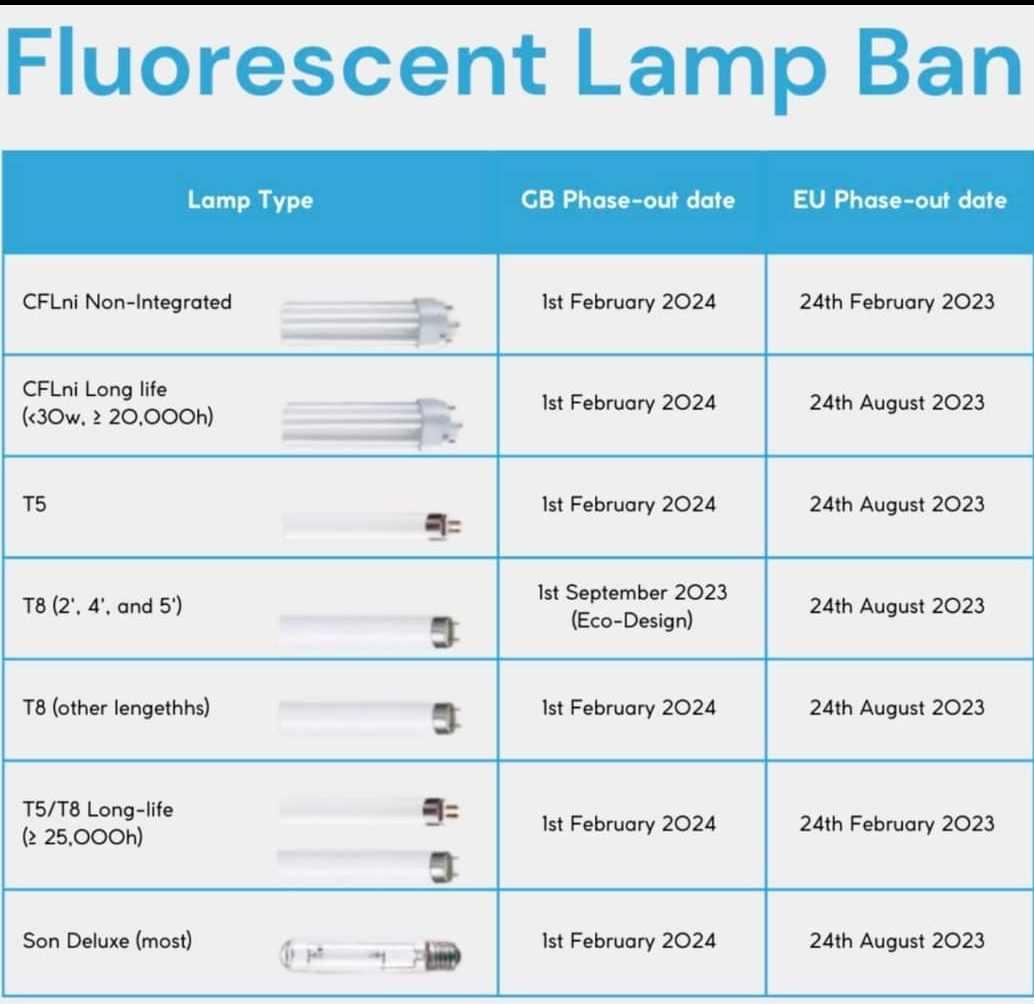
Changing to LED lighting in anticipation of the impending ban on fluorescent bulbs in February 2024 is a wise decision for several important reasons:
Compliance with Regulations: Switching to LED lighting ensures that you remain compliant with the upcoming ban on fluorescent bulbs. Non-compliance may result in legal consequences or difficulty in sourcing replacement bulbs.
Energy Efficiency: LED bulbs are highly energy-efficient, consuming significantly less electricity than fluorescent bulbs. This translates into lower energy bills and reduced environmental impact, helping you save money while reducing your carbon footprint.
Longer Lifespan: LED bulbs have a much longer lifespan compared to fluorescent bulbs, lasting up to 25,000 to 50,000 hours or more. This reduces the frequency of replacements and associated maintenance costs.
Reduced Maintenance: LED lighting requires less maintenance because of its durability and long lifespan. You'll spend less time and money replacing bulbs and fixtures.
Instant Light: LEDs provide instant full brightness when switched on, eliminating any warm-up time, unlike fluorescent bulbs that may take a few seconds to reach their full illumination.
Environmental Benefits: LED bulbs do not contain hazardous materials like mercury, which is present in fluorescent bulbs. By switching to LEDs, you contribute to a safer and more environmentally friendly lighting solution.
Improved Lighting Quality: LED lighting offers better color rendering, allowing for more accurate and vibrant illumination of objects and spaces. You can choose from various color temperatures to suit your lighting preferences.
Dimmability: Many LED bulbs are dimmable, providing flexibility in adjusting light levels to create different atmospheres in your space.
Smart Lighting Options: LED technology integrates well with smart lighting systems, allowing you to control your lighting remotely via smartphones or voice commands. This enhances convenience and energy savings.
Long-Term Savings: Although LED bulbs may have a slightly higher upfront cost than fluorescent bulbs, their long-term energy savings and reduced maintenance expenses often lead to significant overall savings.
In summary, the impending ban on fluorescent bulbs in February 2024 is a strong motivation to switch to LED lighting. LED technology not only ensures compliance with regulations but also offers numerous benefits in terms of energy efficiency, durability, lighting quality, and cost savings. Making the transition now is a smart and environmentally responsible choice

